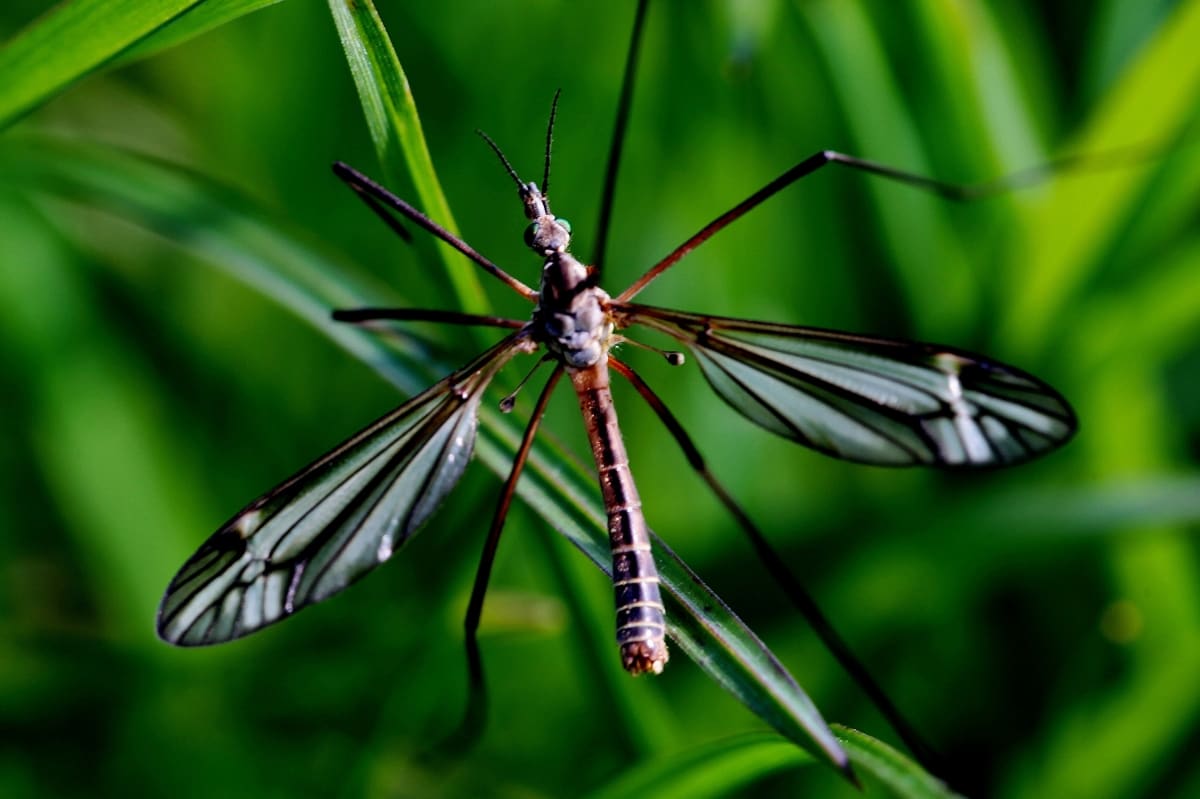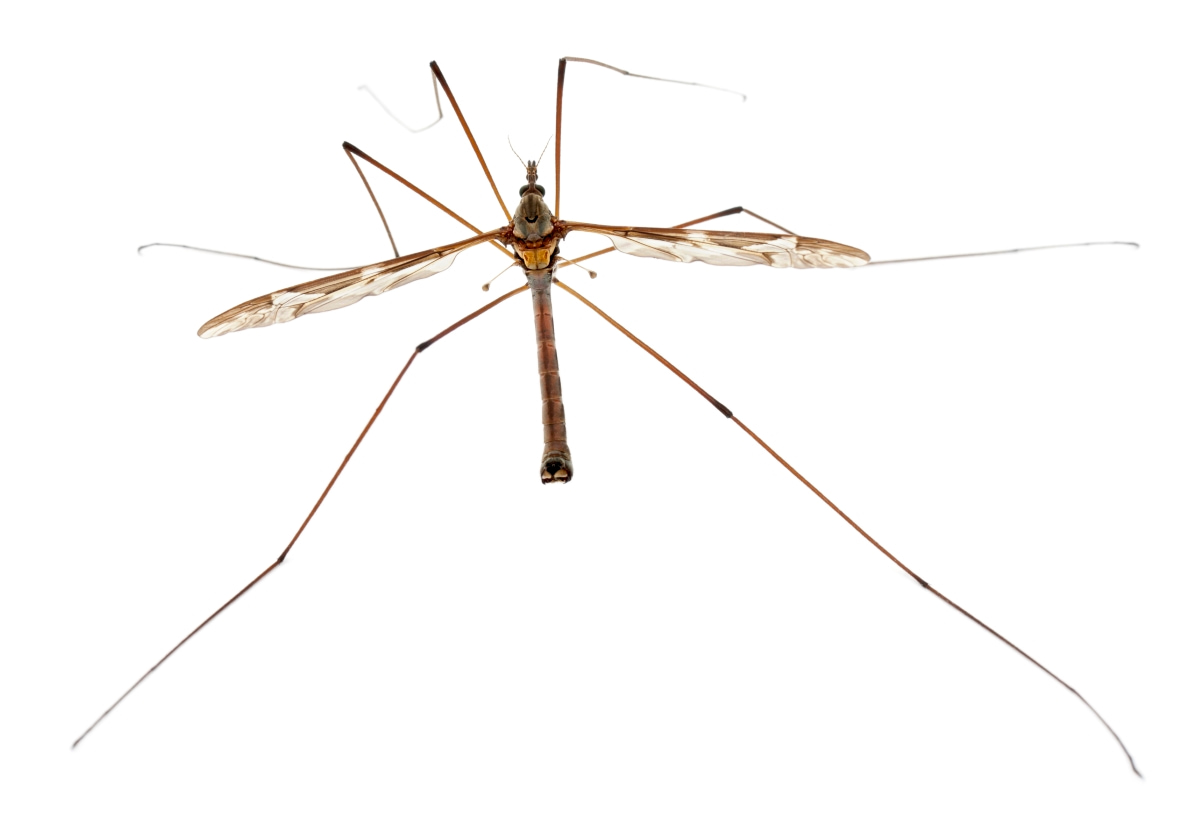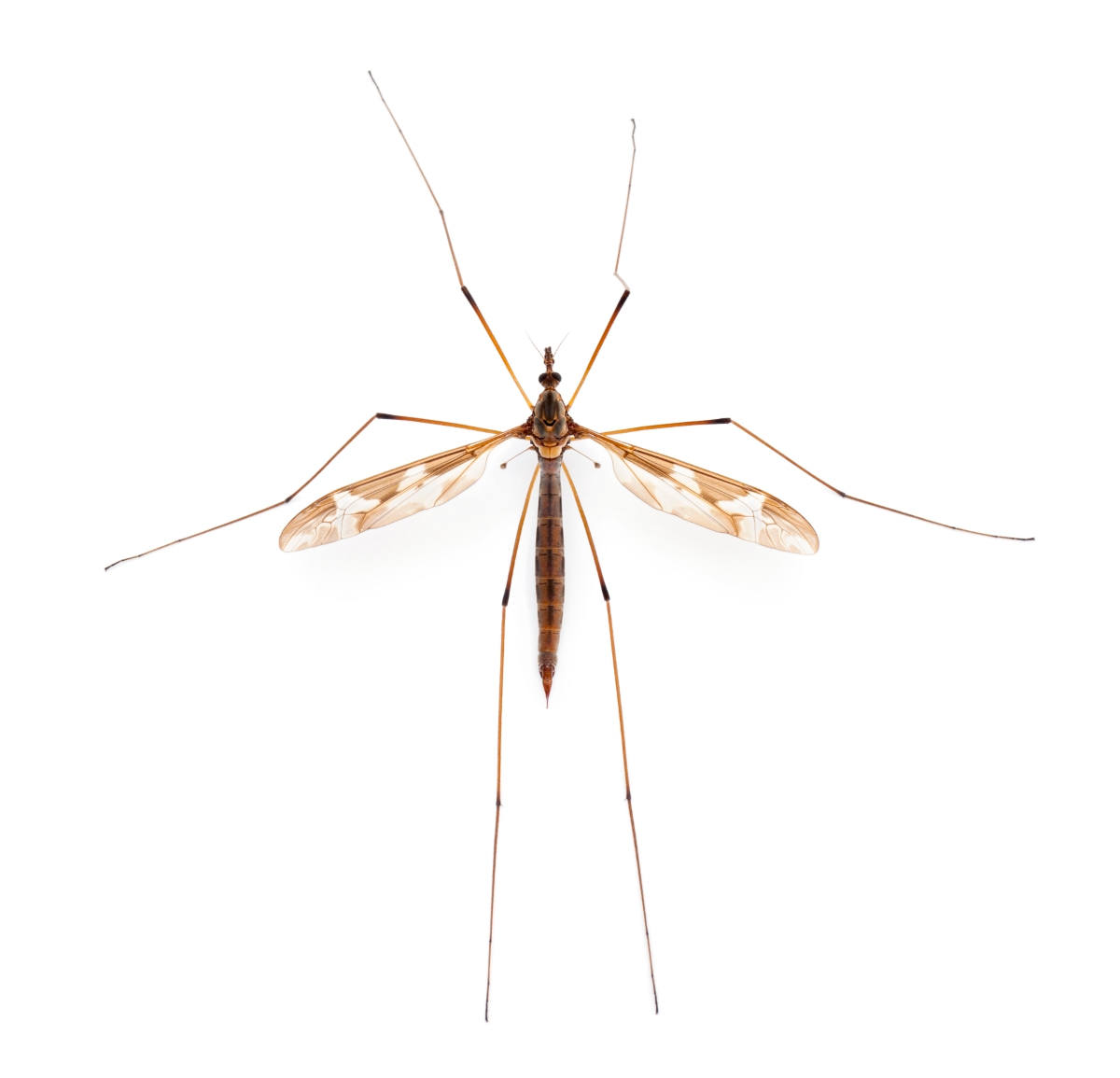Welcome to our comprehensive guide on effective control strategies for eliminating crane flies from your lawns. In this blog, we’ll explore various techniques and treatments, from natural predators and organic solutions to chemical insecticides and professional pest control services. Learn how to identify crane fly damage, understand their lifecycle, and implement preventative measures like lawn aeration and moisture control. Say goodbye to crane fly infestations and restore your lawn to its healthy, vibrant state with our 100% effective control strategies.

How to Get Rid of Crane Flies in Lawns
Understanding Crane Flies
Crane flies belong to Diptera and are distant relatives of flies and mosquitoes. There are many species of crane flies in the United States. Still, some of the most common and invasive ones are the marsh crane fly (Tipula oleracea) and the European crane fly (Tipula paludosa), both native to Europe and Africa. These flies are also called common crane flies.
Crane flies have a short lifespan of about 10 to 15 days as adults. They emerge from pupation below ground in late summer or early fall to mate and lay eggs. Female crane flies can lay up to 300 eggs in moist soil near water sources, such as ponds, streams, or low-lying areas of lawns. Eggs hatch in two weeks and larvae start feeding on the grassroots.
Identifying Crane Fly Damage
Crane fly larvae are long, white, worm-like insects measuring up to 1 ½ inches long. They have finger-like projections on one end, no legs, and no head. They are called leather jackets because of their tough skin. They feed on the roots and crowns of grasses, especially cool-season grasses like Kentucky bluegrass, perennial ryegrass, and fescue.
Crane fly damage can be seen as brown patches or thinning areas in lawns, especially in late winter or early spring when the larvae are most active. The damage may be confused with other lawn problems, such as drought stress, fungal diseases, or nutrient deficiencies. To confirm the presence of fly larvae, you can do a soap test by pouring warm, soapy water over a suspected area and counting the number of larvae that come to the surface within 10 minutes. A population of more than 25 to 50 larvae per square foot is considered damaging and requires treatment.
Lifecycle and Habits of Crane Flies
Crane flies have a four-stage life cycle: egg, larva, pupa, and adult. Eggs hatch in late summer, early fall, while larvae feed on grass roots and deeper into the soil. Pupae emerge in late winter or early spring, and adults emerge from late summer to early fall, mate, and lay eggs within a few days. Crane flies are mostly active at night or on cloudy days, often resting on walls, fences, or plants. They are poor flyers and may sip nectar from flowers. They are attracted to lights at night and may enter homes through open windows or doors.
Prevention Strategies
- Mow your lawn regularly to the proper height for your grass type, usually between 3 and 4 inches.
- Water your lawn deeply, frequently to encourage deep root growth and avoid overwatering that creates moist conditions for egg laying.
- Fertilize your lawn according to soil test results and avoid excessive nitrogen that promotes lush growth that attracts crane flies.
- Dethatch your lawn as needed to remove excess organic matter that provides food and shelter for crane fly larvae.
- Aerate your lawn annually or biannually to improve drainage and soil structure and reduce compaction that favors crane fly development.
- Overseed your lawn with a mixture of grass varieties that can tolerate crane fly damage better than pure stands.
In case you missed it: Maize Shoot-fly Pest Management: Symptoms, Treatment, Chemical, Biological, Natural, and Organic Control

Monitoring and Early Detection
- Inspecting your lawn regularly for brown patches or thinning areas that indicate crane fly feeding.
- Do a soap test in late winter or early spring to determine the population density of crane fly larvae in your lawn.
- Looking for adult crane flies near lights at night or resting on walls or plants during the day in late summer or early fall.
Cultural Control Methods
- Raking your lawn in late winter or early spring to remove crane fly pupae and expose them to predators or weather.
- Mowing your lawn before adult emergence to reduce the number of crane flies that can mate and lay eggs.
- Removing sources of standing water or improving drainage to make your lawn less attractive for egg laying.
- Installing barriers or screens on windows and doors to prevent adult crane flies from entering your home.
Natural Predators and Biological Controls
- Birds, such as starlings, robins, crows, and gulls that, feed on crane fly larvae and pupae in lawns.
- Skunks, raccoons, moles, and shrews that dig up and eat crane fly larvae and pupae in lawns. However, these animals may also cause damage to lawns by their digging activity.
- Ground beetles, rove beetles, and carabid beetles prey on crane fly larvae and pupae in the soil.
- Fungi, like Metarhizium anisopliae and Beauveria bassiana, infect and kill crane fly larvae and pupae in the soil.
- Nematodes, such as Steinernema feltiae and Heterorhabditis bacteriophora, enter and kill crane fly larvae in the soil. These nematodes can be purchased, applied to lawns as a biological control agent.
In case you missed it: 10 Best Fruit Fly Traps in India: Price List Included

Organic Treatment Options
- Insecticidal soap is a soap-based product that kills crane fly larvae by disrupting their cell membranes. It can be sprayed on lawns in late winter or early spring when the larvae are active.
- Neem oil is extracted from the seeds of the neem tree that has insecticidal and repellent properties. It can be sprayed on lawns in late summer or early fall to deter adult crane flies from laying eggs.
- Spinosad is a bacterial product that kills crane fly larvae by affecting their nervous systems. It can be applied to lawns in late winter or early spring when the larvae are active.
Chemical Control Measures
Pyrethroids, such as bifenthrin, cyfluthrin, deltamethrin, lambda-cyhalothrin, and permethrin, are synthetic compounds that mimic the insecticidal properties of pyrethrins from chrysanthemum flowers. They kill crane fly larvae and adults by disrupting their nervous system. They can be applied to lawns in late winter or early spring when the larvae are active or in late summer or early fall when the adults emerge.
In case you missed it: 10 Best Fruit Fly Traps in India: Price List Included

Carbamates, such as carbaryl, which are synthetic compounds that kill crane fly larvae by inhibiting their enzyme activity. They can be applied to lawns in late winter or early spring when the larvae are active. Organophosphates, such as chlorpyrifos and diazinon, are synthetic compounds that kill crane fly larvae by interfering with their nerve transmission. They can be applied to lawns in late winter or early spring when the larvae are active.
Water Management
- Water your lawn deeply frequently to encourage deep root growth and avoid overwatering that creates moist conditions for egg laying.
- Water your lawn early in the morning to allow the soil to dry during the day and reduce fungal diseases that may weaken your lawn.
- Avoid watering your lawn before adult emergence to discourage female crane flies from laying eggs.
- Adjust your irrigation system to avoid runoff or puddling that may attract crane flies.
Repair and Recovery
- Rake your lawn and remove dead grass and debris that may harbor crane fly larvae or pupae.
- Overseed your lawn with a mixture of grass varieties that can tolerate crane fly damage better than pure stands.
- Fertilize your lawn according to soil test results and avoid excessive nitrogen that promotes lush growth that attracts crane flies.
- Apply a thin layer of compost on topsoil to improve soil quality, provide nutrients for your lawn.
Conclusion
By implementing a combination of natural, organic, and chemical control strategies outlined in this guide, you can effectively eliminate crane flies from your lawns. With diligence and proper lawn management practices, you can enjoy a pest-free and healthy outdoor environment.
- Beneficial Insects in Pest Management
- Natural Solutions for Pest Control in Flower Gardens
- Types of Fungicides Used in Agriculture
- Common Issues in the Fruit Development Stage of Pomegranate Farming
- Fruit Development Issues in Papaya: Easy Solutions and Treatment
- Soil-Borne Diseases and How to Protect Your Plants
- Practices to Prevent Disease Spread in the Garden
- From Wilted to Thriving: How to Treat Root Rot Naturally in Houseplants
- Natural Remedies to Cure Brown Spots on Fig Tree Leaves